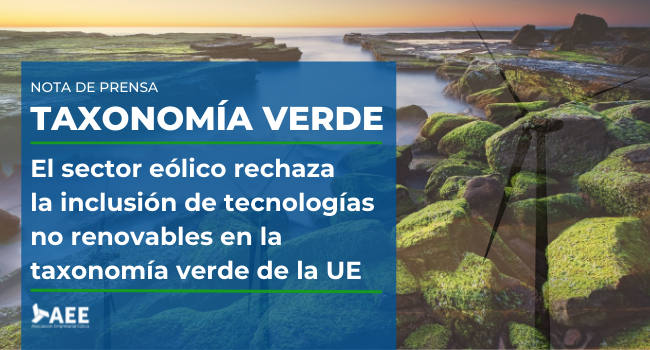The green taxonomy should only be used for renewable energies
Natural gas and nuclear are not renewable energies and their inclusion in the green taxonomy can cause confusion for investors, diverting funds that should be used for renewable technologies.
If it is necessary to make investments in non-renewable technologies to accompany the energy transition process, a specific and transitory taxonomy should be established with strict criteria that ensure its minimization of environmental impact and the effective fulfillment of the European decarbonisation objectives.
The decision to include gas and nuclear in the green taxonomy should never negatively affect the speed of installation of renewables in EU countries, nor should it lead to a decrease in investment interest in renewables, nor delay European objectives of decarbonization.
According to the regulatory framework set forth in the European Green Deal, the green taxonomy regulation is intended to guide companies and investors in their decarbonisation plans, identifying sustainable activities and economic sectors that contribute to the reduction of CO2 and other gases that cause of climate change. In this way, the green taxonomy helps channel investments towards those essential sectors to achieve the goal of climate neutrality in 2050.
The current targets in the EU for new wind capacity are 15 GW per year in the period 2021-2025. However, to achieve the planned goal of reducing greenhouse gases by 55%, it would be necessary to install 30 GW/year until 2030.
If additional investments are allowed in Europe in gas or nuclear infrastructures for the generation of electricity or hydrogen exclusively from renewable sources, and even if these comply with the emission requirements that are demanded of them, we can affirm that it is foreseeable that the new facilities will be operating more beyond 2050, displacing part of the renewable generation. All of this could endanger even the achievement of the emission reduction target for 2030, and also the development of the European wind industry as one of the pillars of the EU’s energy transition.
Likewise, for the wind sector it is important that the European taxonomy continues to be an international reference and a coherence tool that guides investments towards decarbonisation in Europe. Any measure like the current one influences in adulterating its final objective.
How can it affect in Spain that gas and nuclear are included in the green taxonomy?
In the case of Spain, we have a roadmap on the development of renewables for 2030 and 2050. In both scenarios, wind power is seen as a leading technology in the energy transition. The National Integrated Energy and Climate Plan 2021-2030 (PNIEC) estimates a wind power capacity of 50.3 GW by 2030, almost double the current power. On the other hand, it must be taken into account that there is a forecast for 2030 of 3 GW of offshore wind power for Spain.
In our country, the established goal of incorporating renewables is realistic and consistent in order to move towards decarbonization at the right pace. In Spain there are no plans to build new nuclear or gas facilities. Regarding the nuclear power plants, a calendar until 2035 of gradual closure has already been agreed between the Government and the operating companies. Regarding gas, in Spain there are enough gas plants and gas import and storage infrastructures to ensure its contribution to the energy transition until 2050.
However, for the deployment of renewables in our country, the contribution of funds from abroad is very important. If the possibility of investing in nuclear or gas in other EU countries is enabled, financial investment in renewables in Spain could be affected, conditioning the fulfillment of the country’s objectives for total decarbonisation in 2050.
Objections to the inclusion of gas and nuclear as sustainable technologies are by no means unique to the European renewable energy sectors. They have also been revealed by, among others, investors with ESG criteria and independent experts who advise the European Commission. We hope that in the processing of the complementary Delegated Act these objections can be taken into account, and that the process can be reoriented towards the taxonomy that we need, with a clear differentiation between what is sustainable and what is not. This will make it possible to guarantee the necessary investments towards renewable technologies, in such a way that the 2030 and 2050 objectives are not jeopardized.

